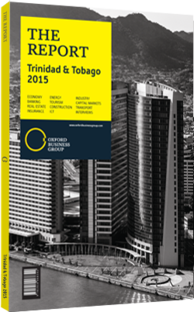Indar Maharaj, President, National Gas Company (NGC): Interview

Interview: Indar Maharaj
How is the price of natural gas currently affecting the industry’s operations?
MAHARAJ: NGC acquires gas from upstream producers to sell downstream under 15-year contracts. In the early stages of the industry, we adopted fixed-price contracts with an escalation clause. Over the years we found that downstream industries were subject to fluctuations in global commodity prices, which impacts the local economy. In an attempt to reduce risk, most contracts are now indexed to commodity prices, which provides a hedging mechanism. We share risks with upstream producers, making sure they have a continuous market, as well as with downstream buyers by helping to absorb shocks in the marketplace. At the same time, we share in the rewards when gas prices escalate. It is a collaborative effort that, to a large extent, has created a very stable framework for the industry and, consequently, the economy.
To what extent can new downstream projects adjust to the volumes of gas supply?
MAHARAJ: There are two projects currently under development that will add to current gas demand. These are the Mitsubishi-Massy methanol-to-dimethyl-ether plant, which will require around 100m standard cu feet per day, and the smaller-scale Gasfin liquefied natural gas (LNG) project. We obviously have to examine the situation in the market when promoting downstream investments. It is essential to insure that the upstream supply is robust – as opposed to the supply disruptions of the last two years – and allows room for growth. The level of exploration and development is encouraging, with foreign direct investment in the energy sector expected to be around $2b in 2015. This is translating into projects that will yield either new reserves or additional volumes, such as Juniper, Angelin and Savannah by BP Trinidad and Tobago, with the latter being the first exploration well drilled by the company since 2006. Additionally, BG Group’s appraisal and exploration wells in blocks 5C and 5D, and BHP Billiton’s work on the Angostura field, will further increase gas supply. The government is now aggressively pursuing the cross-border Loran-Manatee field, and discussions between the operating companies are in an advanced stage. I am hopeful that this will lead to a greater, more reliable upstream gas supply in the medium term.
What gas processing opportunities show the greatest potential for further development?
MAHARAJ: Investment decisions are highly influenced by the different outlooks for the medium- and long-term price of gas. Two years ago LNG might have been the most attractive natural gas venture. Today, some downstream ventures might be considered by some to be more profitable. Additionally, there are certain industries in T&T, namely, methanol, ammonia and their downstream operations, that the industry is most comfortable with, and for which the country has the know-how and necessary human resources.
What steps need to be taken to increase the usage of compressed natural gas (CNG)?
MAHARAJ: We are approaching the growth of the industry in two ways. On the demand side, we are encouraging certain market segments, such as vehicles owned by the government and buses, to switch to CNG. Some state enterprises, including NGC, have already started converting their fleets to CNG. It is also fundamental to create awareness among citizens about the benefits of CNG and to involve the private sector in converting vehicles. We expect that as we create the demand, awareness will increase and so will supply options, especially as the government begins thinking about decreasing fuel subsidies. On the supply side, we plan to increase the number of stations from 11 to 35 by 2016, which includes five mobile stations. In terms of gas volume requirements, CNG will always be small relative to the overall demand for gas in T&T. Depending on the number of CNG vehicles in the country, this may be less than 1% of production of natural gas.
You have reached the limit of premium articles you can view for free.
Choose from the options below to purchase print or digital editions of our Reports. You can also purchase a website subscription giving you unlimited access to all of our Reports online for 12 months.
If you have already purchased this Report or have a website subscription, please login to continue.

